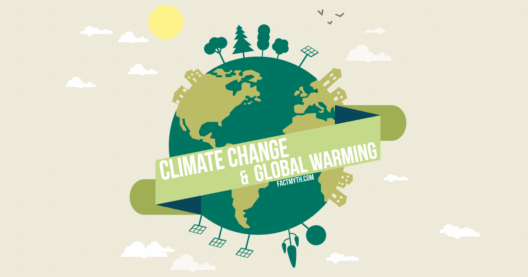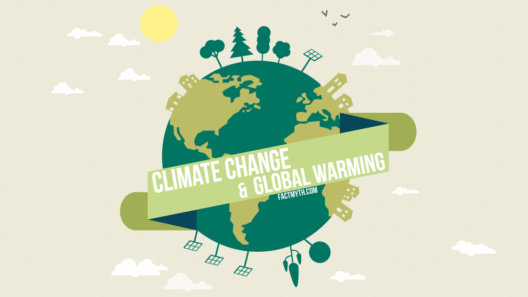The escalating frequency and intensity of extreme climate events—ranging from heatwaves and hurricanes to floods and droughts—has irrevocably altered our planet’s ecosystem. As societies grapple with these impending catastrophes, the question arises: How can we experience less extreme climate changes? To address this intricate dilemma, we must delve into a multifaceted approach that encompasses individual actions, systemic changes, and innovative solutions. The journey toward a more stable climate demands curiosity, creativity, and a collective will to enact transformation on various levels.
Understanding the Factors at Play
To navigate the complexities of climate change, it is imperative to comprehend the underlying factors contributing to these extreme shifts. Industrialization, deforestation, and the unabated emission of greenhouse gases have drastically altered atmospheric conditions. These human activities act as catalysts for climate anomalies.
In addition, natural phenomena like volcanic eruptions and solar cycles play a role in global temperature variations. However, the anthropogenic influence predominate over these natural cycles. The Intergovernmental Panel on Climate Change (IPCC) has documented that human activities have resulted in a marked increase in average global temperatures, which subsequently leads to more pronounced climate volatility. Therefore, distinguishing between these influences is crucial for developing effective mitigation strategies.
Systemic Solutions: Mitigating the Anthropogenic Impact
While individual actions are vital, systemic solutions are essential to mitigate the overarching anthropogenic impact on the environment. Policymaking plays a critical role in fostering sustainable practices across industries. Governments worldwide must enforce stringent regulations governing emissions, promote renewable energy sources, and uphold environmental protection laws. Transitioning to a circular economy—where waste is minimized, and resources are reused—can significantly decrease the strain on the earth’s resources.
Incentivizing green technologies is another effective approach. By investing in research and development of renewable energy sources such as solar, wind, and hydroelectric systems, we can reduce reliance on fossil fuels. Harnessing these alternative energies challenges the status quo and helps curtail greenhouse gas emissions, effectively mitigating climate change.
Moreover, reforestation and afforestation initiatives are crucial for restoring ecological balance. Trees act as carbon sinks, absorbing CO2 from the atmosphere. Therefore, increasing forested areas can serve as a buffer against climate extremes. Governments and NGOs must advocate for large-scale reforestation projects and develop urban green spaces that contribute to resilient ecosystems.
Individual Responsibility: The Power of Personal Choices
Amid these systemic changes, individual actions can aggregate to create significant impact. Embracing a sustainable lifestyle begins with conscious choices in daily routines. Reducing energy consumption, opting for public transportation, and supporting local produce can significantly curtail one’s carbon footprint. The integration of plant-based diets can also serve as a formidable countermeasure to climate change, as livestock farming is a substantial greenhouse gas emitter.
Furthermore, community engagement is paramount. Activism at the grassroots level raises awareness and fosters collective action. Participation in local environmental initiatives, educational programs, and climate strikes empowers individuals to be agents of change. When communities unite in a common purpose, the potential for meaningful change multiplies exponentially.
Innovative Solutions: Technology as a Catalyst
Embracing innovation is crucial in the fight against climate change. Technological advancements provide unique opportunities to mitigate environmental degradation. For example, advancements in carbon capture and storage (CCS) technology can prevent CO2 from entering the atmosphere, while sustainable agriculture practices can enhance land productivity without exhausting natural resources.
Moreover, the transition to smart cities—integrating IoT (Internet of Things) technologies to manage resources effectively—can lead to more sustainable urban environments. Smart grids and energy-efficient buildings reduce energy waste significantly. By fostering sustainable urban planning, cities can become resilient to climate shifts, ensuring that citizens are better equipped to adapt to changes.
Education as a Pillar of Transformation
Education serves as both a tool and a catalyst for change. Comprehensive climate education is essential for future generations to understand the complexities of environmental stewardship. By instilling a sense of responsibility and connection with nature, individuals are more likely to embrace sustainable practices as a way of life.
Interactive learning experiences, such as workshops and field trips, can further instill appreciation for the environment. Schools should incorporate sustainability into their curricula, emphasizing not only the science of climate change but also the social and economic implications. An informed populace is more likely to advocate for environmental policy changes and become engaged in activism.
Collective Action: The Power of Unity
Perhaps the most compelling aspect of mitigating extreme climate changes is the innate power of collective action. When individuals, organizations, and governments band together under a shared vision, transformative possibilities emerge. Global initiatives such as the Paris Agreement symbolize a unified commitment to combat climate change, yet the effectiveness of such treaties relies on adherence and proactive measures taken at the national and local levels.
Transcending national borders, collaboration among nations can foster innovative solutions to global issues. Initiatives involving technology sharing, financial aid for developing countries, and exchange programs can propel collective progress in combating climate change.
In conclusion, experiencing less extreme climate changes necessitates a comprehensive approach that includes systemic solutions, individual responsibility, innovative technologies, and education. By understanding the complexities of climate change and fostering collective action, society can navigate through these challenges with resilience. Embracing curiosity and promising a shift in perspective, we can transform our relationship with the environment, ensuring a sustainable future for generations to come.








